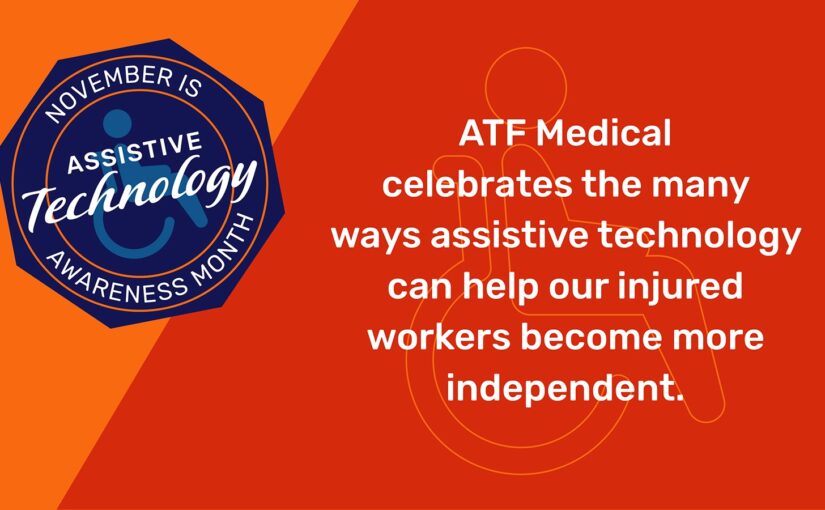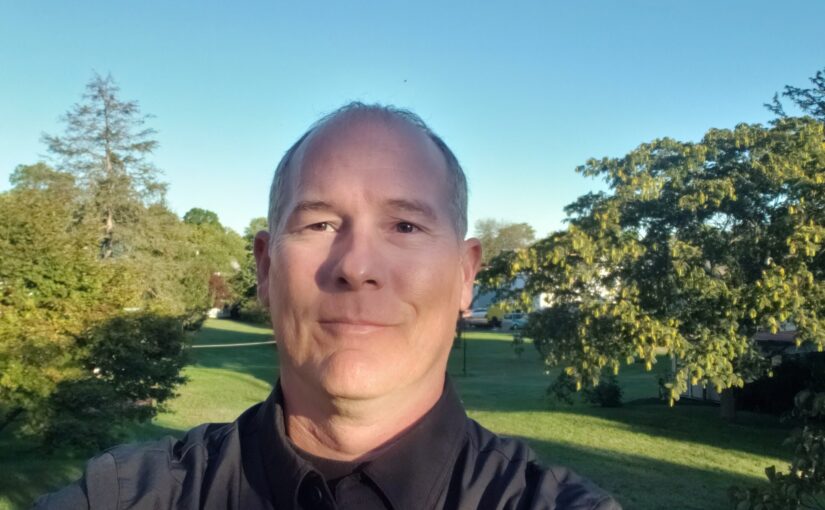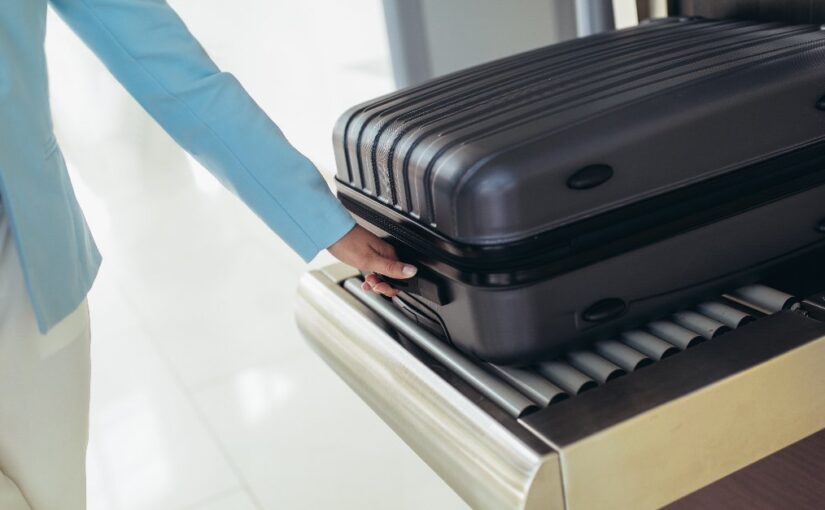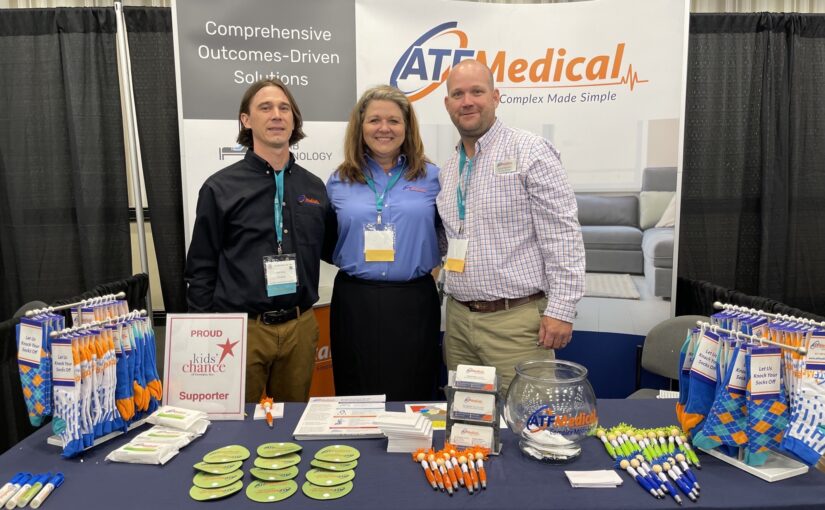November is National Assistive Technology Month, the perfect time to highlight the ways assistive technology changes the lives of our injured workers.
First, what does the term “assistive technology” mean? The Assistive Technology Industry Association defines it as “any item, piece of equipment, software program, or product system that is used to increase, maintain, or improve the functional capabilities of persons with disabilities.”
In workers’ comp, powerchairs, Hoyer lifts, sip-and-puff controls, computer accessibility systems, and vehicle mods come to mind. But it goes way beyond equipment and computers. Adapting a bathroom so an injured worker can shower alone is a form of assistive technology. As is installing a ramp to enable an injured employee to engage in the community more easily and even return to work.
Assistive technology changes lives.
A stairlift lets an injured worker see what’s upstairs in their home. Equipping wheelchairs with outdoor tires helps them check out their property or take their kids fishing. A vehicle lift means patients can travel.
In one case, a spinal cord injury left an injured worker bedridden and unable to do much of anything by himself. An environmental control unit empowered him to turn lights on and off, change TV channels, play games, and raise and lower his bed. The unit restored some control over his life.
Assistive Technology Reduces Claims Costs
Savings often come from avoiding costs. Installing a transfer unit that eliminates the need for a caregiver can save $50,000 a year. A tilt function on a powerchair helps patients with spinal cord injuries shift positions to prevent pressure injuries.
Critical to cost containment, though, are planning and implementation. Complex claims call for a team of experts in diverse specialties who collaborate on a solution for a particular injured worker. The team may be comprised of an Assistive Technology Professional (ATP), Certified Disability Management Specialist (CDMS), Occupational Therapist (OT), Certified Environmental Access Consultant (CEAC), Certified Assessment and Modification Professional (CHAMP), or a professional holding the Executive Certificate in Home Modification (ECHM) certification–among others.
The team needs to carefully consider the person’s clinical and functional condition, challenges, home, and goals. Then, they need to identify the best combination of medical equipment, accessibility technologies, and home modifications. The design needs to be outcomes-oriented. The solution should foster the injured employee’s recovery, mobility, and independence in the most cost-effective manner.
Too often this doesn’t happen because the team members don’t talk to each other. Medical equipment providers don’t collaborate with the occupational therapists (OTs) or the Assistive Technology Professionals (ATPs) or the home modification experts. Working in silos, they remodel a house without realizing its ceiling can’t support the lift or the floors can’t bear the weight of a 300-pound patient in a 450-pound power chair. So, the contractor widens doorways but not wide enough to accommodate a chair’s turning radius. Or the equipment doesn’t fit in the space.
Countless claims have been billed for expensive remodels or overly complicated equipment that the injured employee did not need or could not use. One company even received a home mod referral for a room addition to store durable medical equipment that wasn’t being used!
These errors drive claim costs, frustrate injured workers, and create problems for the adjusters. Lack of communication and coordination among providers account for these mistakes. Using an all-inclusive provider like ATF Medical eliminates potential competition and friction among the different entities.
ATF Medical’s Model
ATF Medical starts with a thorough assessment of the person’s physical, functional, and clinical condition and of their home. Then we assemble a team of credentialled experts to produce a solution that combines the most medically appropriate and cost-effective balance of equipment and technologies with adaptive housing changes.
Our service is comprehensive. We can just install a ramp if that’s all you need. But by partnering with leading manufacturers and contractors, ATF Medical delivers all the complex rehab technology a claim requires. Whether it’s sophisticated rehab chairs, custom manual chairs, specialty mattresses, vehicle lifts, home accessibility systems, and/or adaptive housing solutions … we do it all.
We plan and manage everything for you, too – all the ordering, delivery, and fitting. We educate the injured worker and their family on the use and maintenance of their assistive technology. We check on them after they’ve had a chance to use it to see how they’re doing and answer any questions. And we stay involved for the life of the claim, maintaining and repairing equipment and monitoring patients’ progress.
We also select and collaborate with contractors and manage the project scope, construction costs, and deadlines for adaptive housing projects. We make sure everything works and works together. And we communicate with claims reps every step of the way.
During Assistive Technology month, we’ll recognize some of our credentialled pros who help change the lives of injured workers. Be sure to give them a shout-out.









